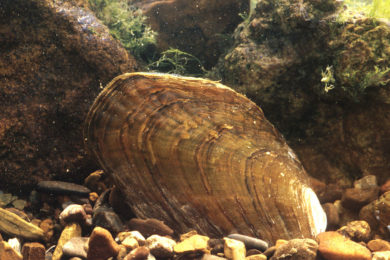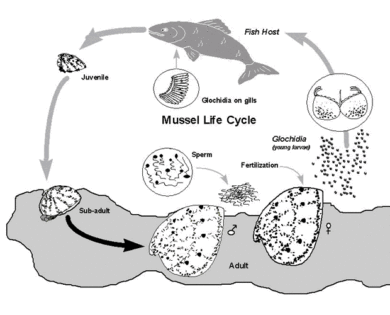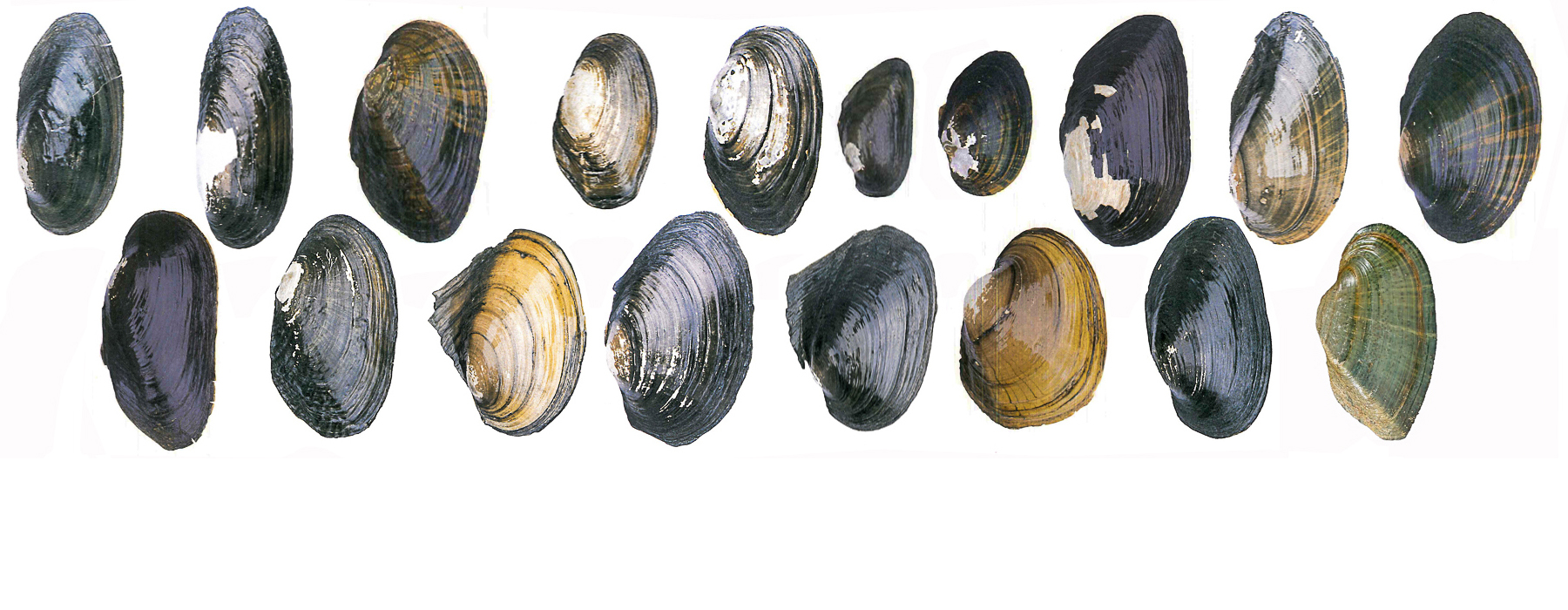
Fluted-shell (Lasmigona costata). Dick Biggins, U.S. Fish and Wildlife Service – Image Library. Mollusks.
Freshwater mussels need clean water, suitable habitat, and healthy fish assemblages. Vermont’s native mussels are threatened by habitat loss, alteration, and fragmentation from bridge construction, riverbank stabilization, and dams, which have been responsible for dramatic losses of habitat. Bank erosion and storm water runoff can cover mussel beds in sedimentation. The introduced and invasive Zebra Mussel is decimating Lake Champlain mussel populations and the exotic and invasive Asiatic Clams are now found near Vermont. Mussels have been shown to be sensitive to a variety of pesticides and other chemicals. Wastewater effluents, stormwater, and agricultural runoff can carry pollutants into rivers and effect mussel health.

Freshwater mussel life cycle.
Freshwater mussels have a remarkable life cycle. Microscopic larvae, called glochidia, which look like tiny mussels, attach themselves to the fins or gills of a fish. Each mussel species is specific about the fish their glochidia parasitize. Loss of specific fish hosts can reduce or eliminate mussel reproductive success. As freshwater mussel abundance decreases, lower densities can have negative consequences for reproduction because male mussels release sperm into the water, which are then filtered by female mussels. As populations grow more and more isolated and smaller, genetic viability can be compromised.
Vermont’s Wildlife Action Plan, a proactive examination of the health of Vermont’s wildlife, provides a blueprint for wildlife conservation for everyone from government agencies, to nonprofit organizations, and private landowners. In Vermont, 13 of the 18 known species are considered ‘Species of Greatest Conservation Need’ by the revised Vermont Wildlife Action Plan (2015). The plan’s two highest priorities are: 1) obtain baseline information on distribution and abundance of each species, include all existing information sources; and 2) conduct inventories to detect and gather information on mussel populations. This project aims to fulfill these high priority tasks.
The first step in developing effective conservation strategies for freshwater mussels is to know where populations exist. Without this basic information, conservation planning and action cannot be achieved.
Fichtel and Smith (1995) compiled freshwater mussel records from museum collections, private shell collections, and field records of biologists that were working in Vermont at the time. Their dataset comprised of records from 270 sampling sites across the state. The authors noted that the mussel distribution they compiled was not complete. Some streams had been under-surveyed or not sampled at all, while many lakes had never been surveyed. They hoped that their atlas would be updated in the future to reflect new knowledge and changes in species distributions. Unfortunately, their dataset was lost for many years until we recently recovered it from an antiquated software system.
Since this seminal work, many freshwater mussel surveys have occurred in parts of the state to better document endangered species locations, as part of endangered species permitting for projects such as road and bridge building, waterway changes (rip-rap, dredging, etc.), and other projects that may interfere or require the taking of state threatened and endangered species. These surveys have been conducted by governmental agencies, conservation organizations, consultants, and naturalists. Our cursory inventory of historic datasets suggests that there are likely over 10,000 freshwater mussel occurrence records scattered among a variety of sources, and there are likely many more that remain to be discovered. All of these data remain scattered in databases, spreadsheets, reports and even field biologists’ notebooks. Our ability to engage this biodiversity information for science and society is severely limited. Assembling these data into a single, comprehensive geodatabase would not only help advance freshwater mussel and waterway conservation, but will ultimately lead to additional collaboration among a variety of stakeholders.







